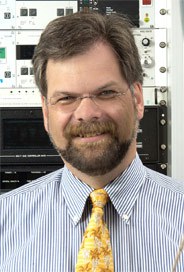Prof. Dr. rer. nat. habil. Claus Michael Schneider
Born August 19, 1958 in Backnang/Wttmbg., Germany
Director at the Institute of Solid State Research, Unit IFF-9 "Electronic Properties"
Research Center Jülich GmbH, D-52425 Jülich, Germany
Jointly appointed Full Professor (C4) at the University Duisburg-Essen
Fachbereich Physik
Lotharstr. 1, D-47048 Duisburg, Germany
| |
since 2004 | Jointly appointed Full Professor for Experimental Physics at the University Duisburg-Essen, Germany |
since 2003 | Director at the Institute of Solid State Research (IFF), Research Center Jülich, heading the unit IFF-9 "Electronic Properties" |
1998-2003 | Head of the Department "Thin Film Systems and Nanostructures" , |
1997-1998 | Lecturer at the J.-Gutenberg University, Mainz, Germany, |
1996 | Habilitation at the Martin-Luther-University, Halle-Wittenberg (Germany) |
1993-1996 | Principal Investigator at the Max-Planck-Institute for Microstructure Physics, Halle/Saale, Germany; Head of the Laboratory "Experiments with Synchrotron Radiation" at BESSY, Berlin. |
1992-1993 | Postdoctoral Fellow at the "Surface Physics Laboratory", Simon-Fraser-University, Canada (Prof. B. Heinrich) |
1990-1992 | Research Scientist at the Institute of Experimental Physics, Free University of Berlin |
1990 | Ph.D. at the Free University of Berlin. Thesis title: "Electronic Structure and Magnetic Properties of Ultrathin Epitaxial Films: fcc-Cobalt on Cu(100)". |
1988-1990 | Research assistant at the Inst. f. Experimental Physics, Free University of Berlin (Prof. Dr. J. Kirschner) |
1985-1988 | Research assistant at the Institute of Interface Research and Vacuum Physics (IGV), Research Center Jülich (Prof. Dr. J. Kirschner) |
1985 | Diploma in Experimental Physics, 2. Physics Institute, RWTH Aachen (Prof. Dr. G. Heiland). Thesis title: " Charge Accumulation and Trapping in Merocyanine Thin Films on Zinc Oxide" . |
1979-1985 | Studies in general physics and solid state physics at the Aachen Institute of Technology (RWTH Aachen) in Germany. |
| |
1992-1993 | Postdoctoral Research Fellowship, NATO Science Division (DAAD) |
1992 | "Karl-Scheel-Award" of the German Physical Society at Berlin |

